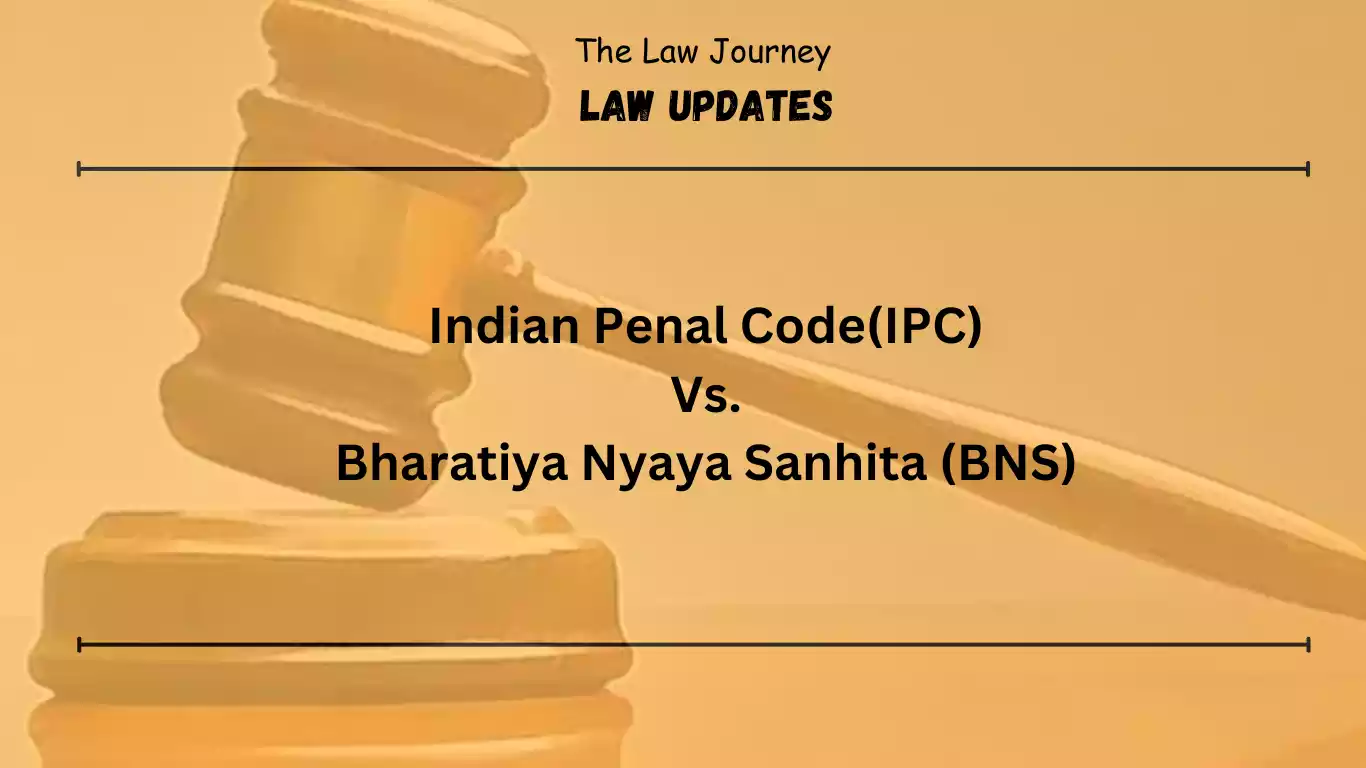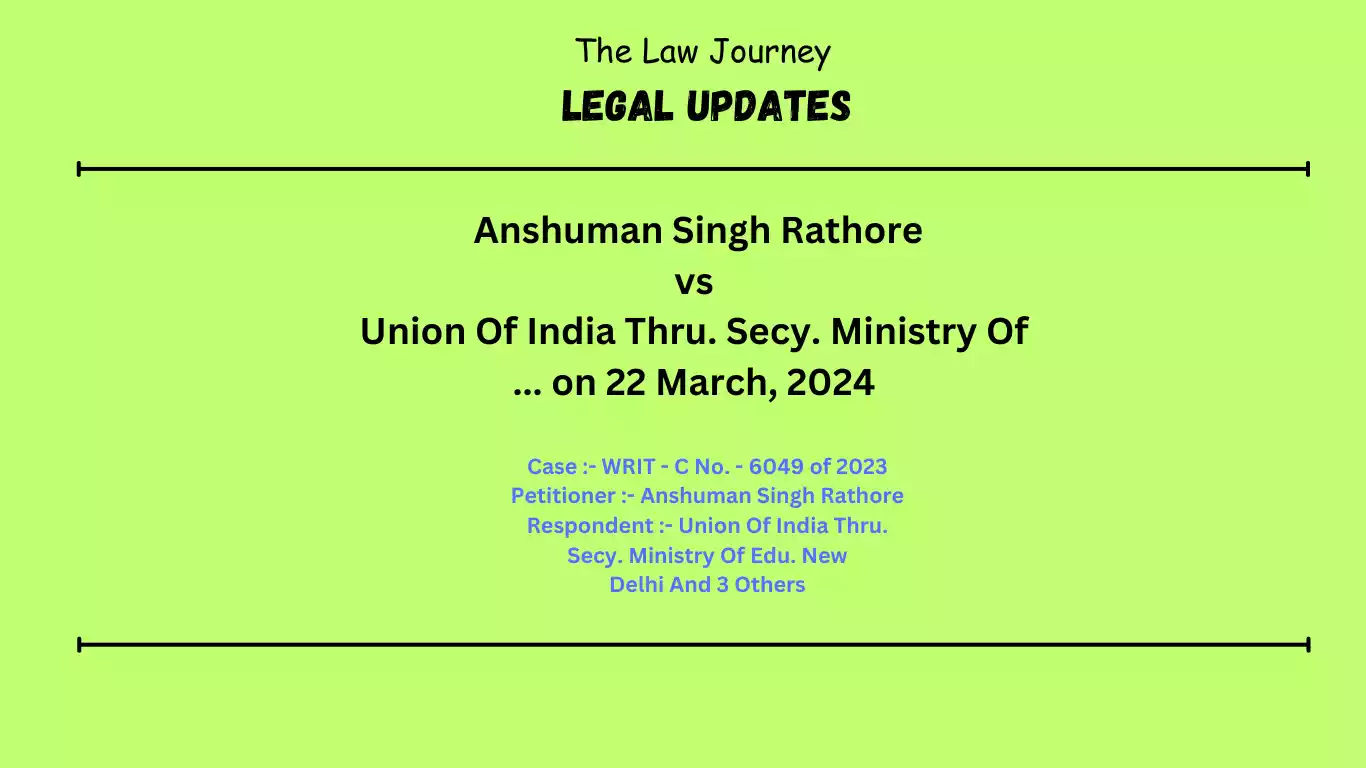Old IPC vs. New IPC(BNS) – The cornerstone of Indian criminal law, the Indian Penal Code (IPC), is constantly being revised and amended to reflect changing legal requirements as well as societal values. This abstract offers a succinct summary of the legal features and gaps in the current legal framework of the comparative comparison between the old and new versions of the IPC.
The historical synopsis highlights the British colonial rule that gave rise to the IPC and highlights the changes made later to address modern legal concerns. Important revisions, such those made in reaction to the gang rape in Delhi in 2012, demonstrate how the IPC has changed to address contemporary crimes and social issues.
A comparison study shows that the new IPC has many improvements, such as a broader scope, provisions for human rights, and gender sensitivity.
The gaps that have been identified include vague definitions, insufficient enforcement protocols, and permissive sentencing criteria. These flaws weaken the effectiveness of the IPC in resolving modern legal issues by causing inconsistent interpretations, gaps between the written and practical laws, and unequal punishments.
In order to strengthen India’s criminal justice system and uphold the principles of justice and equality for all, policymakers, legal experts, and stakeholders from civil society must work together to address the legal loopholes in the new IPC, which is a positive step towards promoting justice, gender equality, and human rights.
Introduction | Old IPC vs. New IPC(BNS)
The Indian Penal Code (IPC) is the foundation of India’s legal framework and the repository of criminal law and procedure. The IPC was promulgated in 1860 to model criminal justice in different parts of British India under British colonial rule. Founded by Lord Thomas Babington Macaulay, the IPC addressed the major crimes of the period and promoted the social and cultural values of the period. However, as India transformed into a powerful country, the need for reform and reformation of the IPC emerged. (Old IPC vs. New IPC(BNS))
Over decades, successive governments have worked hard to develop and adapt the IPC to respond to emerging challenges, technological advances and changing cultural practices. This ongoing process has led to the emergence of the new IPC, which has expanded its jurisdiction to modern crimes such as cybercrimes, environmental crimes and free crimes.
Despite these reforms, the TMK is still plagued with flaws and deficiencies that affect its effectiveness in delivering justice and protecting the rule of law. This article aims to conduct a comparative analysis of the old and new versions of the IPC, highlighting the ongoing changes and their impact on the Indian justice system.
Historical Context | Old IPC vs. New IPC(BNS)
The origins of the Indian Penal Code (IPC) date back to British rule in India. The IPC was founded in 1860 under the leadership of Lord Thomas Babington Macaulay, with the aim of unifying the different legal systems across England. The promulgation of the IPC reflected the country’s government’s efforts to consolidate the law and establish a legal system to regulate its subjects. Drawing on British legal standards and local customs, the IPC spells out crimes, penalties and legal procedures that reflect India’s laws that will prevail over many years.
However, the origins and prejudices of the IPC reflected the power of the time, which often undermined imperial interests of Aboriginal perspective and justice. As India begins its journey towards independence, calls for reform and reform of the IPC are growing to align the law with democratic values, justice and human rights. Subsequent reforms and reforms have attempted to resolve these issues, albeit with varying degrees of success, reflecting India’s ongoing quest for greater justice and equality.(Old IPC vs. New IPC(BNS))
Old IPC Vs. New IPC
1). Scope and coverage:
The old IPC mainly focused on traditional crimes that existed during the colonial period, such as theft, murder and adultery.
The new IPC extends its scope to cyber crimes, intellectual property rights, etc. It expands it to include new crimes such as.
2). Legal terms:
Terms and legal terms in the old IPC generally reflect the old language. And Colonial Ideology.
The new IPC includes modern terms and definitions to increase the clarity and accuracy of legal interpretation.
3). Penalties and Penalties:
Penalties prescribed in the old IPC generally had a one-size-fits-all approach and lacked flexibility and proportionality.
The new IPC further advocated punishment, including factors such as the seriousness of the crime, the offender’s intent and social impact.
Loopholes in Old and New Indian Penal Code (IPC)
1.Ambiguity in definitions:
- Old IPC: Old IPC often suffers from vague definitions, resulting in inconsistent legal interpretations. This uncertainty allows for judicial discretion and possible police abuse.
- New IPC: Despite efforts to improve and clarify the content, the new IPC still struggles to resolve ambiguities in some provisions, causing confusion and uncertainty in the legal process. Unclear definitions can lead to different results and lead to legal disputes.(Old IPC vs. New IPC(BNS))
2.Outdated crimes:
- Old IPC: Old IPC mainly deals with crimes related to the colonial era and ignores new emerging crimes such as cyber crimes, intellectual property crimes and environmental damage. This limitation makes the old IPC inadequate for today’s problems.
- New IPC: Although the new IPC expands its scope to cover today’s crimes, it will soon still be inadequate in the fight against cyber crimes. The pace of technological progress and social change has outpaced legal reform, leading to inconsistencies in the legal system.(Old IPC vs. New IPC(BNS))
3.Lenient punishments:
- Former International Criminal Code: Penalties under the former International Criminal Code are generally disproportionate and severe; This leads to light sentences for serious crimes. This lack of attention did little to deter criminal behavior and undermined public confidence in the justice system.
- New International Criminal Code: Despite efforts to reform the sentencing process, the New International Criminal Code can still result in amnesty in some cases, especially regarding illicit trade and white crimes. Inadequate penalties for these crimes will increase crime and weaken the prevention of corruption and financial fraud.(Old IPC vs. New IPC(BNS))
4.Implementation Challenges:
- Old IPC: Implementation of the old IPC faced problems such as bureaucratic inefficiency, lack of resources and corruption in the criminal justice system. These issues impact the rule of law and cause complaints around the world.
- New IPC: Implementation of the new IPC continues to face similar challenges due to the pressure of modern crimes and the advancement of digital technologies. Law enforcement will struggle to keep up with the changing criminal justice system, creating a gap between enforcement and prosecution.
5.Overcriminalization:
- Old IPC: The old IPC was criticized for its tendency towards overcriminalisation, where minor crimes were disproportionately punished, leading to an excessive justice burden. Overreliance on criminal sanctions hinders efforts to solve social problems and promote conflict resolution.
- New IPC: The increase in crimes under the new IPC has raised concerns about over-criminalisation, where people can be punished for minor offences. Excessive criminal activity can drain resources, disrupt court operations and divert attention from more serious crimes, ultimately leading to a perversion of justice.
6.Lack of Rehabilitative Focus:
- Old IPC: Old IPC gave priority to rehabilitative decisions and ignored socio-economic problems that led to criminal activities. This penal system increases crime and incarceration, leading to inequality and conflict.
- New IPC: Although there are efforts to include medical measures in the new IPC, the importance of punishment and prevention may not see the need for this approach to crime prevention and treatment of offenders. Without good recovery support and resources, people will have difficulty integrating into society and breaking free from the cycle of violence.(Old IPC vs. New IPC(BNS))
Conclusion | Old IPC vs. New IPC(BNS)
Comparison of old and new versions of the Indian Penal Code (IPC) highlights the changes and complexities that have occurred in India’s criminal justice system. Although amendments have been made to the IPC over the years to address deficiencies and adapt to societal changes, significant flaws remain in both. From vague definitions to implementation issues and lack of feedback, these gaps undermine the effectiveness and integrity of India’s legal system.(Old IPC vs. New IPC(BNS))
The old IPC was embedded in the colonial ideology and reflected the political reality of India. From time to time we try to change the criminal and justice system. Their previous laws and wealth are not enough to cope with today’s crimes and prevent unlawful crimes. Additionally, bureaucratic inefficiency and corruption affect the implementation of the law, leading to dissatisfaction and undermining public confidence in the justice system.
Although the new IPC represents a step towards modernization and reform, it also faces challenges. Despite efforts to clarify the definition and scope of crime, ambiguity and ambiguity persist, leading to conflict and enforcement of the law. Additionally, overcriminalization and an emphasis on punishment rather than treatment of crime raise concerns about the effectiveness and fairness of the criminal justice system.(Old IPC vs. New IPC(BNS))
Addressing the deficiencies in the IPC requires a range of approaches, including legislative reform, investment in law enforcement and the judiciary, as well as a commitment to promoting human rights and justice. Additionally, efforts to promote recovery and address public health issues that lead to criminal behavior are critical to promoting fairness and justice.
Consequently, while the IPC is an important pillar of India’s legal framework, continuous efforts must be made to address its shortcomings and ensure that it upolds the principle of justice, equity and human rights for all citizens. It is only through continuous review, development and reform that the IPC can truly play its role in the protection of human rights and freedoms in Indian society.(Old IPC vs. New IPC(BNS))
Related Post | Old IPC vs. New IPC(BNS)
- Concept of Social Groups in Sociology
- moot memorial proposition maker
- Political Notes
- moot court memorial making service
- legal project maker
- moot court memorial maker
- law project maker

















